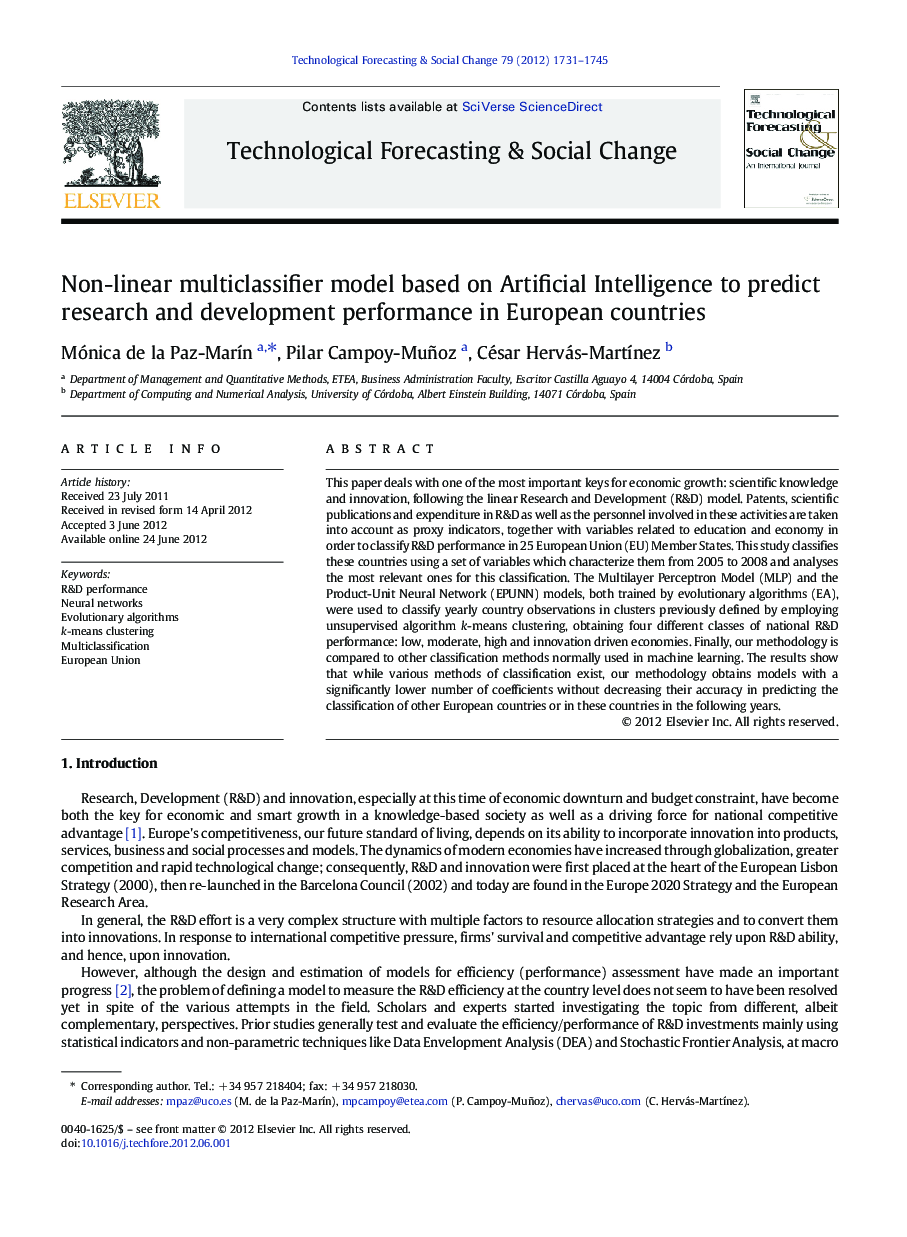| Article ID | Journal | Published Year | Pages | File Type |
|---|---|---|---|---|
| 896661 | Technological Forecasting and Social Change | 2012 | 15 Pages |
This paper deals with one of the most important keys for economic growth: scientific knowledge and innovation, following the linear Research and Development (R&D) model. Patents, scientific publications and expenditure in R&D as well as the personnel involved in these activities are taken into account as proxy indicators, together with variables related to education and economy in order to classify R&D performance in 25 European Union (EU) Member States. This study classifies these countries using a set of variables which characterize them from 2005 to 2008 and analyses the most relevant ones for this classification. The Multilayer Perceptron Model (MLP) and the Product-Unit Neural Network (EPUNN) models, both trained by evolutionary algorithms (EA), were used to classify yearly country observations in clusters previously defined by employing unsupervised algorithm k-means clustering, obtaining four different classes of national R&D performance: low, moderate, high and innovation driven economies. Finally, our methodology is compared to other classification methods normally used in machine learning. The results show that while various methods of classification exist, our methodology obtains models with a significantly lower number of coefficients without decreasing their accuracy in predicting the classification of other European countries or in these countries in the following years.
►This paper is focused on R&D perfomance of European Countries. ►Behavior patterns on R&D perfomance of these coutries are identified and defined. ►Neural networks trained by an evolutionary algorithm are compared with nine. ►The best model according to best accuracy and easiest interpretations is presented. ►The model could be used to predict R&D performance classification of countries.
